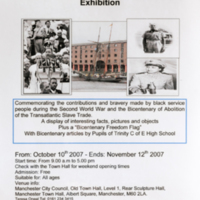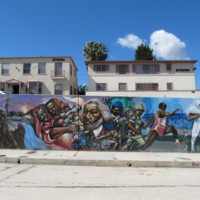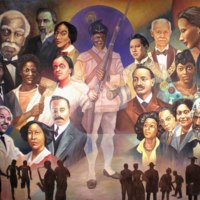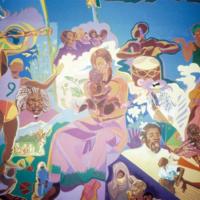
Al
Despite having the lowest regional prevalence of modern slavery in the world, Europe remains a destination, and to a lesser extent, a source region for the exploitation of men, women and children in forced labour and commercial sexual exploitation. Trafficking for sexual exploitation is the most widespread for of modern slavery with an 84% of victims trafficked for this purpose. The majority of those trafficked for this purpose are women and young girls, thought men and boys are also trafficked for sexual exploitation. They often originate from Eastern Europe within the EU as well as Sub-Saharan Africa, with the majority of people being trafficked from Nigeria to various parts of Europe including Italy, France, Spain and the UK through an array of complex trafficking networks. Al Bangura was born and raised in Sierra Leone but now lives in London with his wife and young children. Wanting to help support his family, Al travelled to Guinea where he was told by a man that he could play footbal in Paris. Al trusted this man, however on arrival in Paris, he was put in a room and subjected to sexual exploitation daily. He is now a professional footballer who has played for Watford Football Club in the UK’s Premier League.

Wartime Black History and the Bicentenary
An exhibition by Manchester City Council held at Manchester Town Hall commemorated the contributions of Black service people during World War II. The exhibition also included the Bicentenary Freedom Flag, to mark commemorations of the Abolition Act of 1807. Alongside exploring the efforts of women, West Indian men, and African men in wartime, the exhibition also told the story of the 761st Tank Battalion of the US Army, known as the Black Panthers Tanker Battalion. Primarily made up of African-American soldiers, the squadron was said to be deployed as a public relations effort to maintain support for the war effort from the Black community.

The Crenshaw Wall
In 2000, a graffiti collective called Rocking The Nation (RTN) began The Crenshaw Wall, colloquially known as The Great Wall of Crenshaw. At 7,787 feet long, the mural has become a landmark for the area. The timeline depicts African American history, and features the antislavery figures Frederick Douglass and Harriet Tubman, as well as Marcus Garvey, black soldiers from World War I, II and Vietnam, and Ethiopia’s Emperor Haile Selassie. A shackled slave breaks free from his chains and evolves into an athlete, American footballer and basketball player. Further along the mural are Black Panther Party leaders alongside Martin Luther King Jr., and Malcolm X. The mural starts with a black woman breathing life into the mural and ends with a couple giving birth.“We finally get the chance to paint the Crenshaw Wall, and bring some black awareness to the Crenshaw Wall – to teach the history of our people, to teach our people to be proud, to teach our people love, and where we came from and where we might possibly end up,” explained Enk One of RTN.Over a decade later, the mural requires restoration and protection. RTN are working towards this goal, as well as designating the mural a historical landmark, renaming the block ‘Crenshaw Mural Square’ and developing an app that gives a visual tour of the mural.

The Shoulders of Heroes We Lean On
This mural was created in 2012 by Munir D. Mohammad for the Rhode Island Black Heritage Society, one of the oldest African heritage organisations in the country. Titled The Shoulders of Heroes We Lean On, the mural depicts giants of black history, including the antislavery leader Frederick Douglass, as well as the silhouettes of athletes, musicians and scholars.

Races of the Student Population
In 1976, the Mexican muralist Manuel Martinez created a mural at Auraria College titled Races of the Student Population. It depicts the antislavery leader Frederick Douglass alongside figures of the Black Power Movement including Bobby Seale, and figures and symbols of the African diaspora.